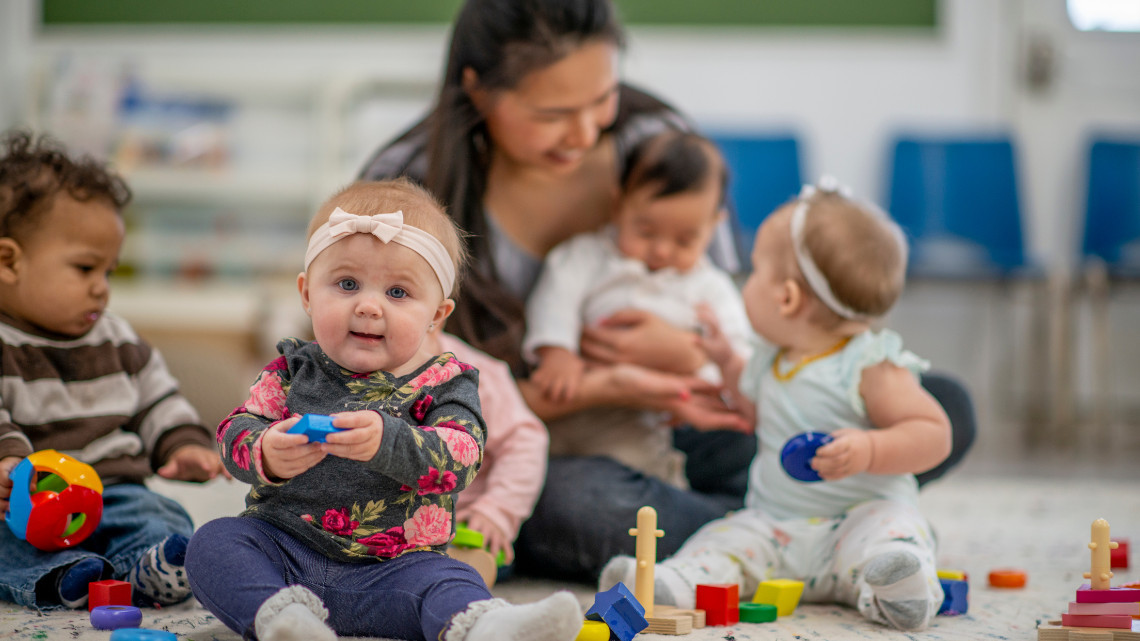
Raising child care provider rates to higher levels than what’s in the governor’s proposed budget, along with creating operational grants for private child care providers serving infants through 3 years of age, must be in the next budget if Sen. Kristen McDonald Rivet (D-Bay City) is going to support it.
“I just want to make sure that I’m really clear that my support in this budget will require that we lean further into the childcare side. We have to figure out how to raise provider rates at a higher level, and we need to actually carve some money out in the state budget as a whole for operational grants for private providers in infant through 3 years old. Otherwise, we cannot move forward with this PreK plan,” McDonald Rivet said during Wednesday’s Senate Appropriations Committee hearing.
Wednesday afternoon, the Senate panel heard its first presentation on the governor’s developing Department of Lifelong Education, Advancement and Potential (MiLEAP).
For Fiscal Year (FY) 2025, the governor proposed providing her new department with a $577 million budget, with $160.9 million coming from the state’s General Fund. Overall, MiLEAP was designed to focus on child care access and early education prior to kindergarten, as well as on post-high school degree and job training opportunities.
Much of the controversy surrounding MiLEAP involves the State Board of Education, as the new department would absorb money and programs currently overseen by the Michigan Department of Education (MDE). Unlike MiLEAP, which will be overseen by governor-appointed acting director Michelle Richard, MDE is led by a superintendent appointed by State Board of Education members, who are elected on a statewide ballot and do not rely on the governor’s approval.
However, McDonald Rivet’s remarks suggest another challenge facing budget-makers as they focus on MiLEAP, which is determining how to increase the availability of child care.
“Here’s my issue. In our childcare subsidy system, right now we know (there are) 300,000 kids that are eligible. I think what you’re saying is we’re budgeting for somewhere around (30,000 to 35,000) kids, so we’re typically only serving about 10 percent of the kids that are eligible for these subsidies,” McDonald Rivet told Richard following her presentation Wednesday. “We also know that in Michigan, we are one of the very few states in the country that adds no general funds to our child care.”
MiLEAP will oversee the Office of Child Development and Care (CDC), which serves families residing at 200 percent of the federal poverty level or below. Recipients of the CDC’s subsidiary benefits must be working or doing something education-related, like attending college or a job certificate program, and must have a child under 13 years of age.
“They choose a childcare provider in their community that meets their needs. That might be a home-based site. That might be a center-based program, it could be in a school . . . all of those are examples of licensed (providers), or in Michigan, we do allow you to work with an unlicensed provider,” Richard said. “You as a family pick what works best for you, and then we pay those individuals as long as they’re part of our childcare system.”
For the ongoing FY ’24 budget, more than $166.9 million in federal funds were dedicated to maintaining CDC child care investments that were set to expire.
Richard clarified that 38,000 families in Michigan are presently being provided low or no-cost child care through CDC subsidies. Gov. Gretchen Whitmer’s proposed $37.9 million to increase rates paid to child care providers by 10 percent would be exclusive to those already receiving CDC subsidies.
“The governor’s budget proposal would increase rates for families that are currently in the system,” Richard told MIRS. “This proposal doesn’t propose increasing the number of children served. It focuses on ensuring that we’re paying a quality rate for care.”
In 2020-2022, there were 310,051 births in Michigan. If the present-day slate of subsidies exclusively served children now 1 to 3 years of age in Michigan at a capacity of 38,000, based on births recorded by the state’s health department, it would be providing for around 12.2 percent of them.
“Here we sit for infant-toddler care, where the average wait time – in my district anyway – is about two and a half years to get child care for your infant. All of us are hearing this in our districts. So, I was really hopeful that we would see in this proposal under this new department a corresponding investment in childcare birth-through-three, because I’m very afraid that if we go forward with this proposal on PreK, we are going to further collapse an already decimated sector that’s caring for our youngest kids,” McDonald Rivet said.
McDonald Rivet also focused in on worries that expanding state-funding for PreK has broken the business model for the private childcare of years past, adding that she knows, as someone who’s provided private childcare, how caring for 4-year-olds is cheaper than caring for infants.
In terms of early childhood education outside the subsidies, Whitmer’s FY ’25 recommendations feature using $159.5 million to continue the state’s Great Start Readiness Program, which served 36,415 children in the 2021-22 academic year. Ninety-one percent of its participants were from households residing at or below 250 percent of the federal poverty line.
Whitmer’s suggestions would remove income requirements and would use $63.5 million to assist an extra 6,800 children.
“What happens when we expand free preschool, which I am entirely in favor of,” McDonald Rivet said.
According to a report published in 2023 by the U.S. Chamber of Commerce Foundation, childcare issues result in an estimated $2.88 billion in yearly losses to Michigan’s economy, and childcare-related worker turnover and absenteeism cost employers in the state an estimated $2.3 billion annually.
The report also stated that 14 percent of parents left a job in the past six months because of childcare issues.
Article courtesy MIRS News for SBAM’s Lansing Watchdog newsletter
Click here for more News & Resources.